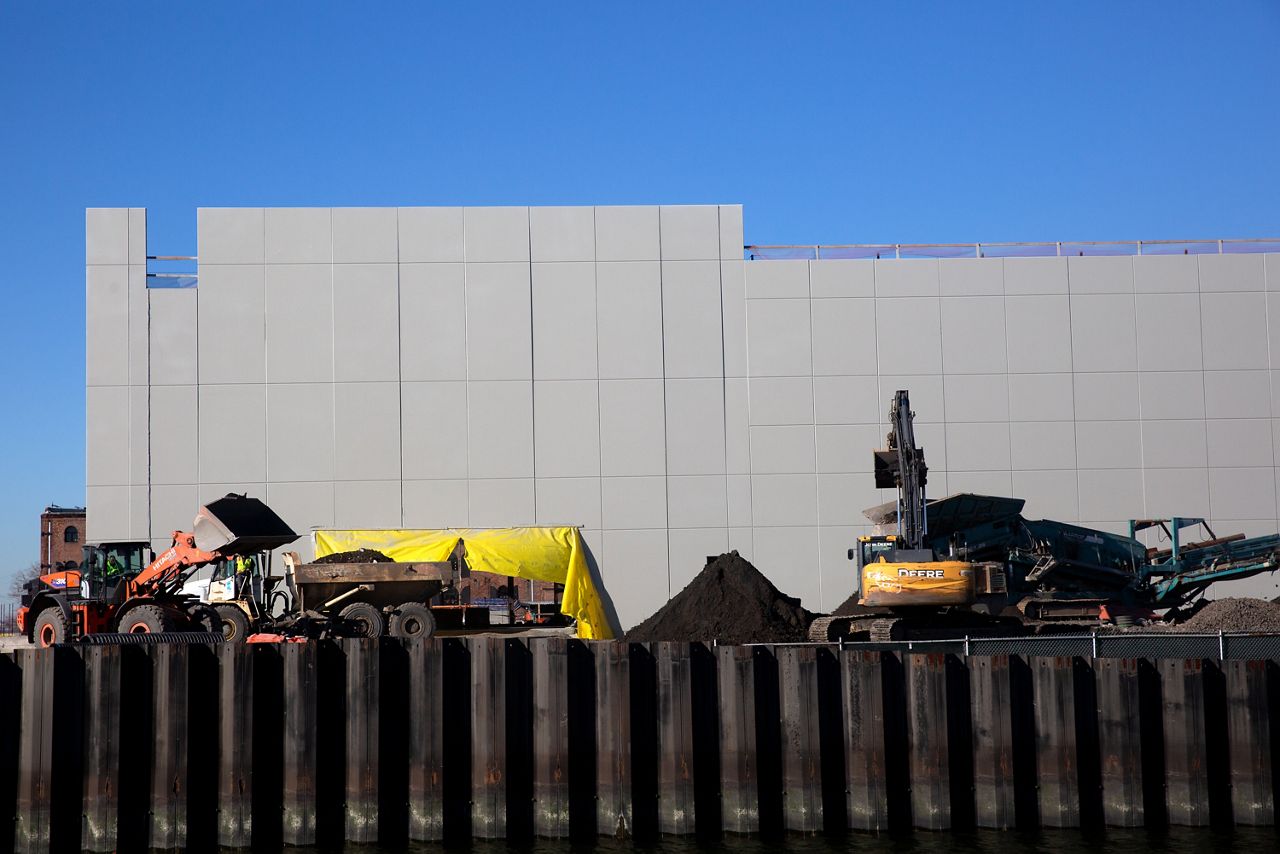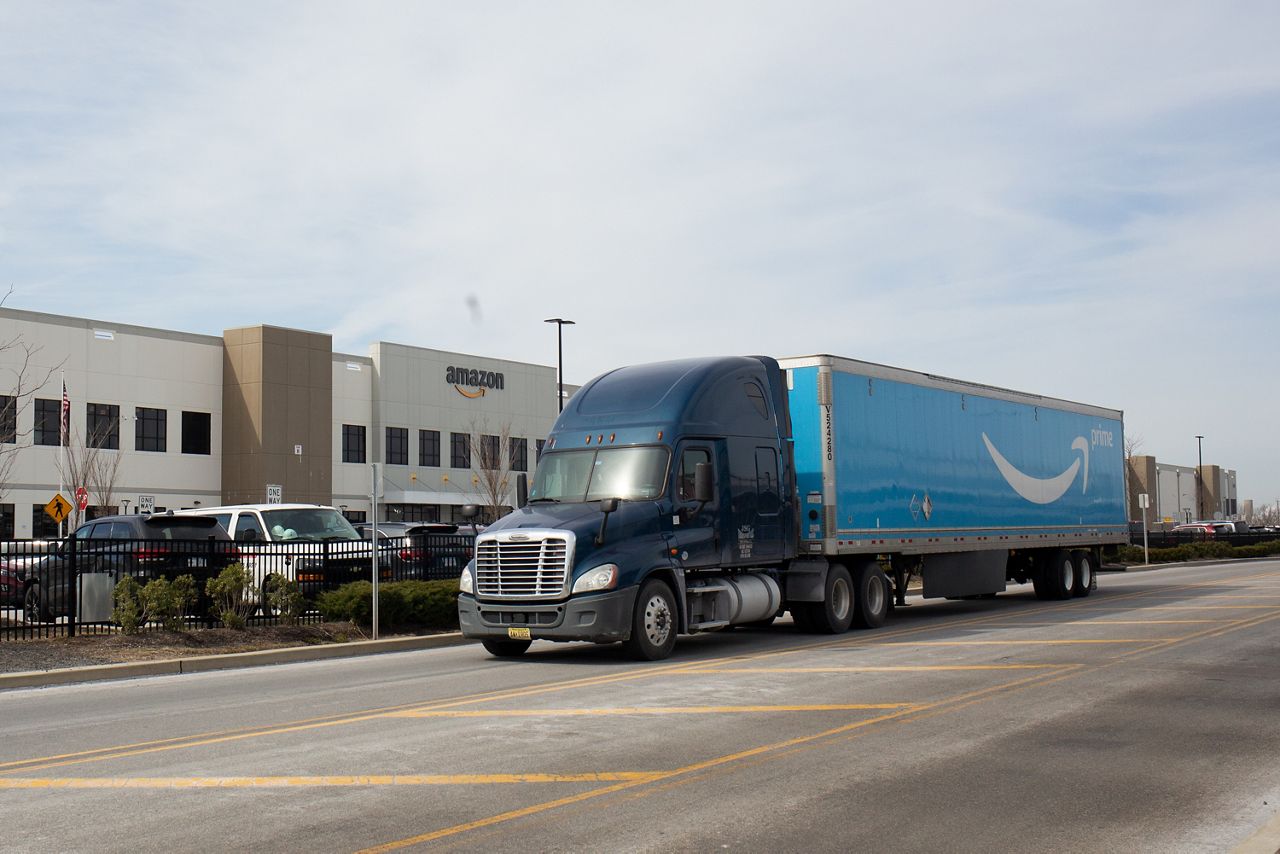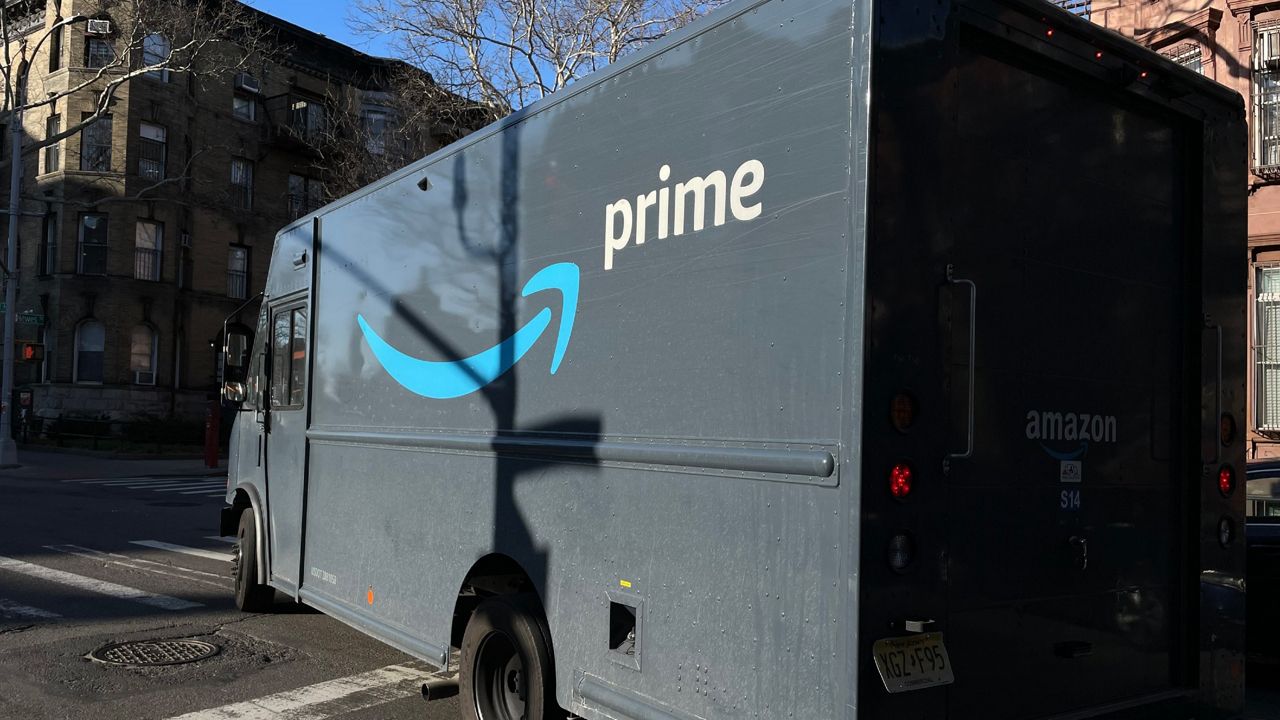As online shopping has grown, so have the so-called last-mile warehouses that store the products consumers need so quickly — and the trucks and vans necessary for those deliveries.
All of the exhaust belched out by these facilities is a threat to public health that disproportionately impacts low-income communities of color, say environmental and health advocates. New legislation in Albany may offer a breath of relief.
A bill introduced Monday by Assemblymember Marcela Mitaynes (D-Brooklyn) seeks to cut down on pollution from truck exhaust associated with local delivery from online retailers, like Amazon — and control the proliferation of warehouses, too.
“This is about the future of our community and ensuring that they’re as healthy as possible,” Mitaynes told THE CITY. “I think we can be a driving force to really showing how we can be proactive on some of the stuff that’s happening, particularly because these things are happening so fast.”
Mitaynes represents an area that includes Red Hook and Sunset Park, where several e-commerce facilities are in the works or operating and members of the communities have been organizing to address traffic and environmental impacts.
The bill would compel the New York Department of Environmental Conservation to adopt a rule that considers e-commerce facilities “indirect sources” of air pollution due to the emissions coming from trucks and vans that carry their goods.
It would require warehouse operators to create air pollution reduction plans and by creating a point system in which facilities earn credits by doing things like using electric vehicles, replacing automobile trips with bikes or installing solar panels.
A state air-quality agency in Southern California, home to one of the largest concentrations of warehouses in the country, adopted a similar policy in 2021. Their rule also used a point system for eco-friendly strategies. If a facility doesn’t earn a certain amount of points, the operators must pay a fee.
Supporters have long said similar rules are needed in New York to prevent worsened air quality and to protect public health, as e-commerce booms with few restrictions.
“We’re hoping that this can move these companies to adopting maybe cargo bikes, for example, to transport these goods to the facility and from the facility to the final destination, and maybe even maritime transportation, at least to the facility,” said Kevin Garcia, the New York City Environmental Justice Alliance’s transportation planner.
“We do need to figure out ways to address the clustering and the size of these facilities, but the rule should provide some relief, at least from an emissions standpoint.”
Setting Limits and Giving Communities a Voice
Under the proposed bill, the DEC would require emissions reduction and mitigation plans of existing e-commerce facilities over 50,000 square feet. New developments or major modifications to existing facilities would have to undergo a new permitted process that would include an environmental review, allowing for public feedback.
Currently, there’s no official way for locals to weigh in on such developments in their neighborhoods.
For areas that don’t already meet “national ambient air quality standards” — federal limits on six harmful pollutants — warehouses wouldn’t be allowed to worsen those levels. According to the Environmental Protection Agency, 11 counties around the state don’t meet those standards, including all five boroughs.
The legislation would also require warehouse operators to publicly report information, including average daily number of vehicle trips, routes and types of jobs at the facilities.

The bill applies to last-mile facilities, which ferry products to customers’ homes, as well as warehouses that store, distribute, process or sort goods.
It would also mandate the DEC to conduct a feasibility study with a cost-benefits analysis of implementing low- and zero-emission zones around the state. Santa Monica launched the country’s first zero-emissions zone, a one-square mile area in which companies may test and deploy greener modes of last-mile delivery to ensure a diesel-free area.
The South Coast Air Quality Management District, the agency that oversees pollution in the greater Los Angeles area, in their similar rule targeted emissions of particulate matter and nitrogen oxide. It applies to warehouses over 100,000 square feet, and is being phased in over time based on warehouse size. The largest warehouses must be in compliance first.
The agency said it did not expect warehouses to relocate as a result of the rule. And it forecast up to 300 fewer deaths, up to 5,800 fewer asthma attacks, and up to 20,000 fewer work days lost between 2022 and 2031 as a result of the rule, with public health benefits projected between $1.2 billion to $2.7 billion.
While it’s too early to say whether those predictions will come true, some facilities have taken early steps to comply with the rule, according to a spokesperson for South Coast, who emphasized that the options for compliance offer flexibility to warehouse operators that often don’t directly own or operate the trucks associated with the facilities.
If New York were to adopt the indirect source rule, it’d be the first full state to do so.
In November, the DEC said it was evaluating Southern California’s indirect source rule for possible adoption, though the rule doesn’t appear on the agency’s 2022 regulatory agenda. The Albany bill would force the agency’s hand.
Separately, a plan for cutting down on truck emissions drafted in March by the Northeast States for Coordinated Air Use Management — of which New York is a member with seven other states — floats adoption of an indirect source rule to target freight.
A DEC spokesperson indicated New York would model its efforts to regulate vehicle emissions after California’s standards, but did not directly address whether New York would pursue the indirect source rule without legislation. The state could pursue the rule without legislation.
The Colorado Regional Air Quality Council, which oversees the Denver metro area, is also considering an indirect source rule.
Environmental Urgency
The indirect source rule is designed to put the onus on the e-commerce industry to clean up its act, rather than having local communities bear costs in the form of health problems and quality of life issues, according to Adrian Martinez, a senior attorney at EarthJustice, an environmental litigation nonprofit based in Los Angeles.
He urged New York to move fast to implement a version of the rule.
“We could have used this rule a decade ago, just before the facilities were built so that they could be designed in a way to minimize impacts and also it would help push technology,” Martinez said. “There’s a need to go quickly given the rise of e-commerce and the logistics industry expanding so much that they’re snatching up land and developing warehouses with disregard for public health.”
EarthJustice is representing three environmental organizations intervening in a legal complaint the California Trucking Association filed challenging the rule there. The industry’s argument rests on whether the agency has the authority to regulate mobile sources in that way.

The Trucking Association of New York did not respond to a request for comment about the possibility of the state adopting an indirect source rule.
A spokesperson for Amazon, which has at least 10 delivery stations in New York City and Long Island, said in an email to THE CITY that the company is “committed to finding innovative solutions to reduce emissions and are transforming our transportation network with investments that help us deliver packages more sustainably to support the communities where we operate.”
That work involves deploying electric vehicles and funding renewable energy projects, the company said.
Still, environmentally minded advocates contend having regulations on the books would drive some accountability for meeting the state’s Climate Leadership and Community Protection Act, which requires New York to slash greenhouse gas emissions 85% from 1990 levels by 2050 — although there are currently no consequences attached to the law besides a decimated environment.
But if agencies fail to meet the mandates, they could be sued in court.
“It’d be really precedent-setting in showing the commitment to the goals of the CLCPA, which mandates economy-wde pollution reductions,” said Summer Sandoval, energy democracy coordinator at UPROSE, a Brooklyn-based nonprofit focused on climate justice. “So we have to look at all sectors of pollution and emissions because it’s not just one sector that harms a community.”



